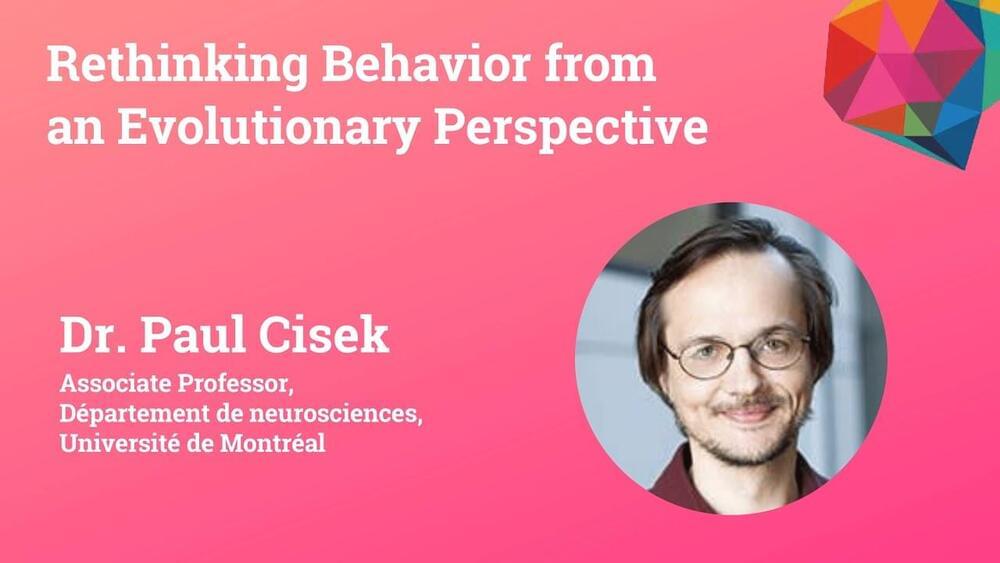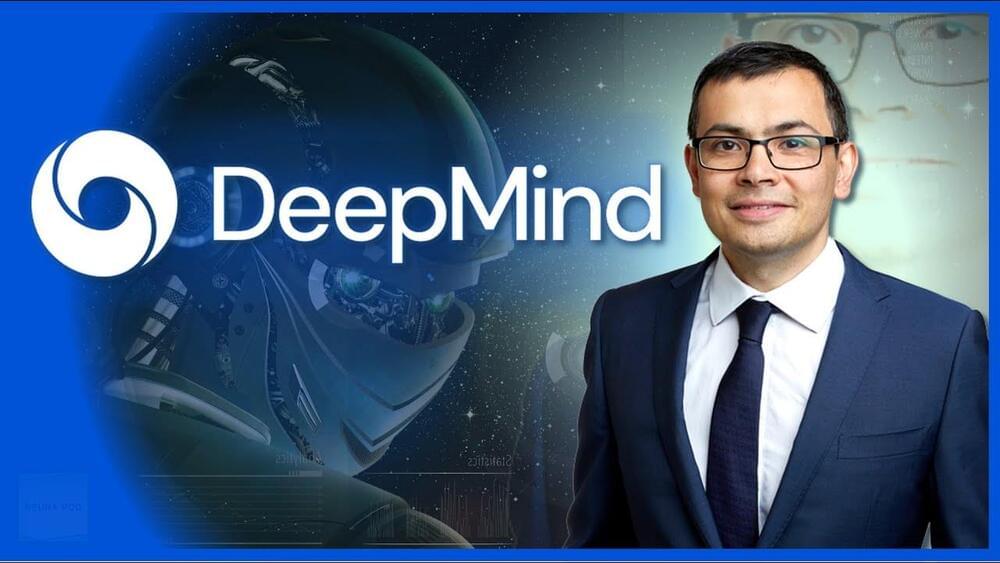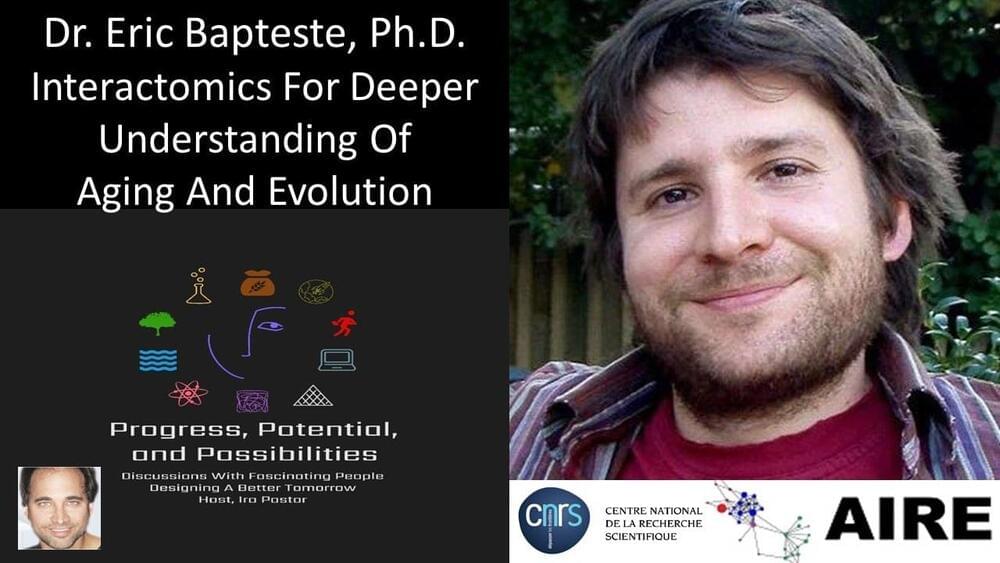Rethinking Behavior from an Evolutionary Perspective.
Dr. Paul Cisek.
Associate Professor, Département de neurosciences, Université de Montréal.

Rethinking Behavior from an Evolutionary Perspective.
Dr. Paul Cisek.
Associate Professor, Département de neurosciences, Université de Montréal.

00:00 Intro.
03:05 Demis Hassabis: Founder of DeepMind.
14:30 DeepMind: Mission and early years.
19:18 Beating the Atari games.
27:22 Elon Musk: thoughts on DeepMind.
28:42 Elon Musk: AI could destroy humanity.
30:20 AlphaGo.
36:14 AlphaZero.
38:30 MuZero.
40:56 WaveNet.
43:18 AlphaStar.
45:33 AlphaFold.
48:39 Gato, A generalist agent.
50:02 Solving *everything else*
This premium episode is a documentary-style video about the history and importance of Alphabet subsidiary, DeepMind. Demis Hassabis, founder, was a chess prodigy by the time he was 13 years old. He went on to conclude he wanted to “solve intelligence” by building artificial intelligence agents and using digital tools. The team at DeepMind has created systems that defeated the world’s best chess and Go professionals. They’ve also cracked the code on the infamous ‘protein-folding problem.’ Demis Hassabis and DeepMind are fascinating. Moreover, they’re still just getting started.
Continue reading “DeepMind: The Quest to Develop Artificial General Intelligence” »
A group of astronomers poring over data from the James Webb Space Telescope (JWST) has glimpsed light from ionized helium in a distant galaxy, which could indicate the presence of the universe’s very first generation of stars.
These long-sought, inaptly named “Population III” stars would have been ginormous balls of hydrogen and helium sculpted from the universe’s primordial gas. Theorists started imagining these first fireballs in the 1970s, hypothesizing that, after short lifetimes, they exploded as supernovas, forging heavier elements and spewing them into the cosmos. That star stuff later gave rise to Population II stars more abundant in heavy elements, then even richer Population I stars like our sun, as well as planets, asteroids, comets and eventually life itself.
When it comes to creating ever more intriguing quantum systems, a constant need is finding new ways to observe them in a wide range of physical scenarios. JILA Fellow Cindy Regal and JILA and NIST Fellow Ana Maria Rey have teamed up with Oriol Romero-Isart from the University of Innsbruck and IQOQI to show that a trapped particle in the form of an atom readily reveals its full quantum state with quite simple ingredients, opening up opportunities for studies of the quantum state of ever larger particles.
In the quantum realm an atom does not behave as a point particle; instead it behaves more as a wave. Its properties (e.g., its position and velocity) are described in terms of what is referred to as the wavefunction of the atom. One way to learn about the wavefunction of a particle is to let the atom fly and then capture its location with a camera.
And with the right tricks, pictures can be taken of the particle’s quantum state from many vantage points, resulting in what is known as quantum tomography (“tomo” being Greek for slice or section, and “graphy” meaning describing or recording). In the work published in Nature Physics, the authors used a rubidium atom placed carefully in a specific state of its motion in a tightly focused laser beam, known as an optical tweezer. And they were able to observe it from many vantage points by letting it evolve in the optical tweezer in time. Like a ball rolling in a bowl, at different times the velocity and location of the particle interchange, and by snapping pictures at the right time during a video reel of the ball, many vantages of the particle’s state can be revealed.

(http://www.evol-net.fr/index.php?option=com_tlpteam&view=team&id=2&Itemid=559) is a Research Director at the French National Centre for Scientific Research (CNRS), the French state research organization and the largest fundamental science agency in Europe.
Dr. Bapteste has both a Ph.D. in evolutionary biology from Pierre and Marie Curie University and a Ph.D. in the philosophy of biology from Pantheon-Sorbonne University.

New video: Stephanie Dainow, Executive Director at Lifespan.io / Lifespan Extension Advocacy Foundation, at #RejuvenationStartupSummit 2022.
Stephanie speaks about Lifespan.io advocating for the development of medical technologies to rejuvenate aged tissues and organs.
Continue reading “Stephanie Dainow at Rejuvenation Startup Summit 2022” »
Microsoft announced today that it added device isolation support to Microsoft Defender for Endpoint (MDE) on onboarded Linux devices.
Enterprise admins can manually isolate Linux machines enrolled as part of a public preview using the Microsoft 365 Defender portal or via API requests.
Once isolated, threat actors will no longer have a connection to the breached system, cutting off their control and blocking malicious activity like data theft.
The word singularity has grabbed a lot of attention in the world of artificial intelligence. It refers to the moment AI exceeds out of human control and changes society.
What led to the emergence of complex organisms on Earth? It’s a significant unanswered question in biology. Researchers from Christa Schleper’s team at the University of Vienna and Martin Pilhofer’s team at ETH Zurich have taken a step towards resolving it. The scientists succeeded in cultivating a special archaeon and characterizing it more precisely using microscopic methods.
This member of the Asgard archaea exhibits unique cellular characteristics and may represent an evolutionary “missing link” to more complex life forms such as animals and plants. The study was recently published in the journal Nature.
All life forms on earth are divided into three major domains: eukaryotes, bacteria and archaea. Eukaryotes include the groups of animals, plants and fungi. Their cells are usually much larger and, at first glance, more complex than the cells of bacteria and archaea. The genetic material of eukaryotes, for example, is packaged in a cell nucleus and the cells also have a large number of other compartments. Cell shape and transport within the eukaryotic cell are also based on an extensive cytoskeleton. But how did the evolutionary leap to such complex eukaryotic cells come about?
